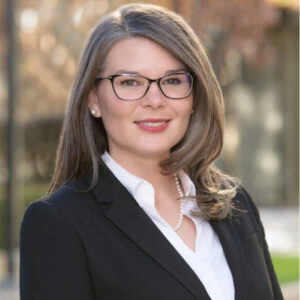Building Banking for Small Businesses: Insights from Rosa Cucicea, Senior VP of Clean Energy Division at River City Bank
Expert advice for managing risks and building relationships in banking for small and mid-sized businesses.
 With the weaknesses in banks exposed recently, we thought it was time to check in with Rosa Cucicea, Senior VP for the Clean Energy Division of River City Bank, a regional bank founded here in 1973. You can view our discussion with Rosa below. She had a lot of insights in how to respond to the recent upsets and some positive messages for clean tech startups.
With the weaknesses in banks exposed recently, we thought it was time to check in with Rosa Cucicea, Senior VP for the Clean Energy Division of River City Bank, a regional bank founded here in 1973. You can view our discussion with Rosa below. She had a lot of insights in how to respond to the recent upsets and some positive messages for clean tech startups.
River City Bank serves customers in a small to middle range, those with $2 million to $30 million in annual revenue. They have innovated a number of ways to serve this segment of the market and Rosa gave a lot of good tips.
First, she gave the clearest explanation of the problem at SVB we have heard. Obviously, banks make money from loaning depositors’ money to others and paying depositors interest for the use of their money. The key is to lend money at rates higher than what depositors are paid. Pretty simple. The key is not to fail to repay the depositors what they are owed.
Most bank failures have occurred when loans go into default and there is not enough money to go around. As a result, banks like to put a lot of money into government securities that have almost no default risk. Those securities however can decline in market value when interest rates increase. To manage this risk, a bank tries not to get saddled with much long-term debt in this bucket, so the possible drop in value is contained.
River City holds a portfolio of such securities that have an average term of about 18 months. If all else fails, the government pays off the debt at the end of the term. If the bank has adequate reserves, it can avoid selling the securities at a loss if interest rates rise. The SVB situation was a different. Its average duration of their government securities portfolio was about 7 years. To make that work, SVB needed a big reserve—but it didn’t have enough. In trying to sell equity shares to build a reserve, they spooked sharp-eyed depositors that something was wrong, and—POOF—that created the run on the bank.
Tip #1. Be aware of the average duration and size of the portfolio of government securities portfolio your bank holds. That comes from asking questions and reading annual and quarterly reports.
Tip #2. Spread your deposits in a number of accounts each under the FDIC limit if possible. River City has a product that will do that for you, for example. Diversify. River City for example has had a net increase in deposits since the SVB problem was exposed.
Tip #3. If you need a loan to smooth out the uneven cash flow in your business, look for federal and state loan guarantee programs to make lending you money a more attractive proposition to a bank. (The Infrastructure Act and the Inflation Reduction Act makes more of this available than before.) California has a Climate Tech guarantee program you should check out.
Tip #4. Start developing a number of banking relationships in advance of your needs. Get to know what terms are out there, who is in charge of the lending decisions, and share with them what you need. Do this even if you are pretty sure you are not bankable right now. Paint a picture of your future and find out who could possibly help. Networking is almost always a good idea.
She had a lot more to say, so don’t miss the opportunity to tune into the whole session to get the full message. You can follow up with her directly at Rosa.Cucicea@rivercitybank.com. She is specifically focused on clean tech companies and wants to meet more of them.

